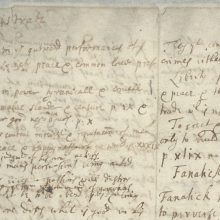
Photo from archive.org
handful of plates that are included in the text. They are used illustratively but are rarely contextualized to add complexity to her arguments. Readers will want to know more. Who… Click to show full abstract
handful of plates that are included in the text. They are used illustratively but are rarely contextualized to add complexity to her arguments. Readers will want to know more. Who commissioned them? What churches or readers were they made for? How were the images used? Do we have further evidence of Magdalenian-inspired imagery made in a reform context such as A Godly Meditation? Calvin certainly would not have approved of such image making. Nor was he an admirer of the medieval superstar Mary Magdalene had become. He poured scorn on her lachrymose performance at Jesus’s tomb and even questioned her faith, deeming it to be “superstition alone, accompanied by carnal feelings” (169). But his exegesis would not prevail among reformers: most were far more positive about the Magdalene as an exemplar for women’s public roles in a new era. And none more so than the George Fox, founder of the Quakers, who wrote a letter defending one of his female preachers in 1684 stating: “Was it not Mary Magdalene and other women that first preached Christ’s resurrection to the apostles? . . . Christ sent these women to preach his resurrection; so it is no shame for such women to preach Christ Jesus; neither are they to be silent when Christ sends them” (214). Ultimately the great virtue of Arnold’s monograph is that it brings together a rich array of early modern texts from across the Protestant and Catholic divide, which often contoured themselves in response to each other, to explore various roles for the laity, especially women in post-medieval society. The book also serves as a gentle reminder to medievalists that though her legends were stripped away, the biblical figure of Mary Magdalene continued to serve as a model for both women and men throughout the early modern period and well beyond.
Journal Title: Church History
Year Published: 2020
Link to full text (if available)
Share on Social Media: Sign Up to like & get
recommendations!